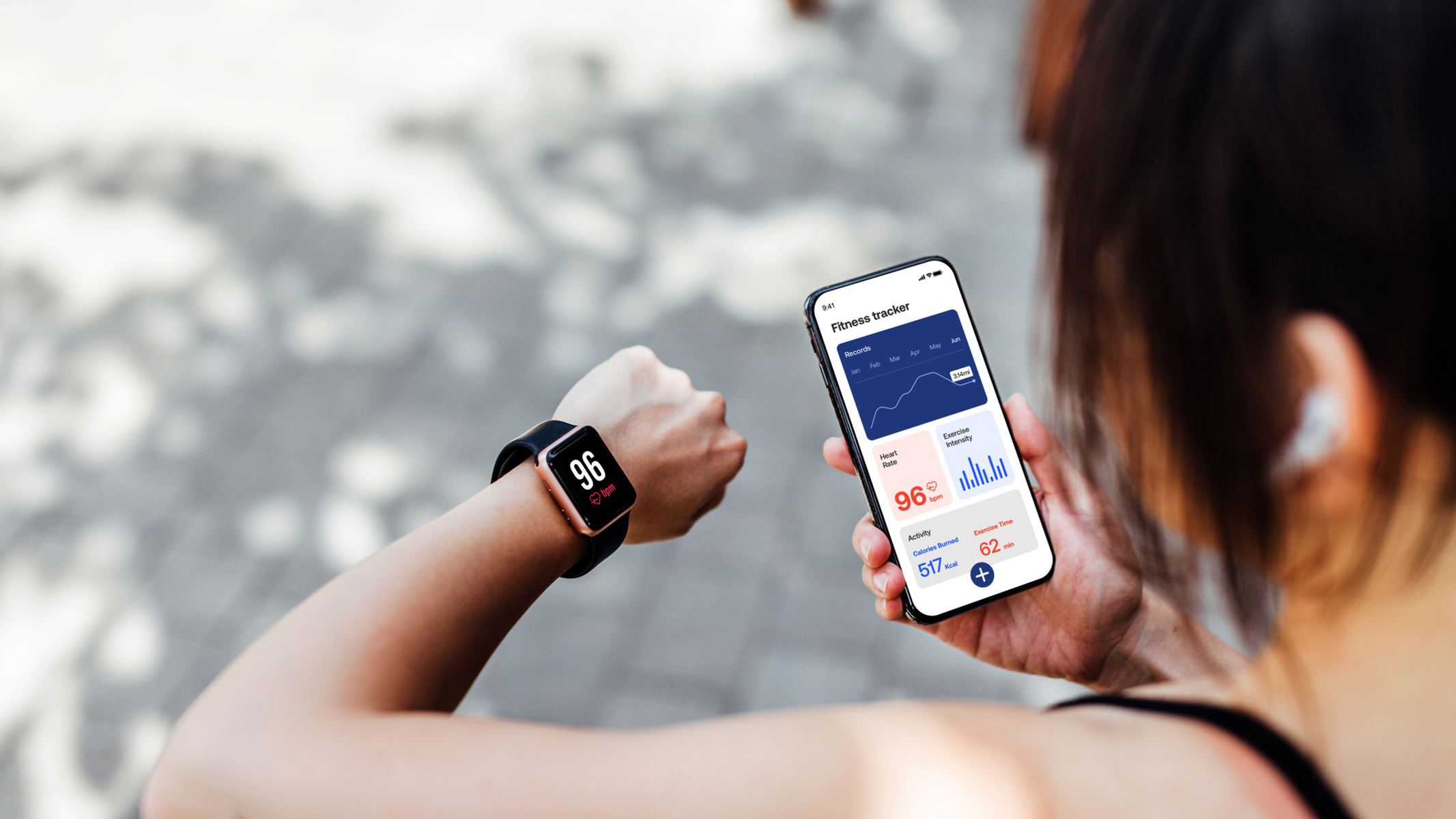Vitamin D: Everything you need to know about this essential nutrient
According to research, 42% of Americans aren’t getting enough Vitamin D. Here’s what you need to know about this bone-boosting vitamin

Known as the sunshine vitamin, the body naturally produces vitamin D when it is directly exposed to sunlight and converts a chemical in your skin into calciferol (vitamin D2). As well as the sun, we can get vitamin D from oily fish, red meat, liver, egg yolks, mushrooms and fortified foods like milk and cereal. You can also take it in the form of the best vitamin D supplement.
“Vitamin D is a fat-soluble essential nutrient that plays an important role in the regulation of calcium and phosphorus, which helps bone formation,” says registered dietitian Nichola Ludlam-Raine. “It also facilitates calcium absorption, which is vital for good bone and teeth health.”
The problem is that about 42% of Americans aren’t getting enough vitamin D, according to research published in the National Institutes of Health database. A deficiency can lead to bone deformities, such as rickets (weak bones) in children, and osteomalacia (bone pain) in adults.
And a study published in Nutrients showed that people with darker skin pigmentation needed longer or more intense UV radiation exposure to synthesize enough vitamin D. So, if you have darker skin, you tend to make less vitamin D in the sun than someone with a lighter skin tone.
In this article, we talk to Ludlam-Raine about vitamin D, how to make sure you’re getting enough, and signs you might have a deficiency.
Why are the benefits of vitamin D?

Nichola Ludlam-Raine is a specialist registered dietitian, scientific author and media spokesperson with over 13 years of clinical experience. She graduated with a first class honours degree in BSc Sport & Exercise Science from Loughborough University, U.K., before gained a Post Graduate Diploma in Dietetics from Leeds Metropolitan University to become a registered dietitian in 2009. She also has an MSc in Health Science.
Scientists are finding links between vitamin D and a range of health benefits.
Improved sports performance and reduced risk of injury
Looking to improve your sports performance? Vitamin D could help. A study in the journal of the American Academy of Orthopedic Surgeons found vitamin D supplementation could increase muscle strength, especially in people who are deficient. Higher serum levels of vitamin D are also associated with reduced injury rates and improved athletic performance.
Lower risk of arthritis and osteoporosis
Vitamin D is essential in preventing thinning of the bones, especially for people who are at high risk of inflammatory arthritis or osteoporosis.

Boosted immunity
According to the journal Nutrients, vitamin D may support the immune system and reduce inflammation and abnormal cell growth. People who don’t get enough could be at higher risk of infection and autoimmune diseases, including type 1 diabetes and bowel disease.
Reduced risk of multiple sclerosis and other chornic conditions
Vitamin D could help prevent diabetes, hypertension and multiple sclerosis (MS). But, more research is needed in these areas, says the National Institutes of Health (NIH).
Improved mental health
A study published in Scientific Reports found that inadequate vitamin D levels were associated with a higher risk of depression. Compared with those with sufficient levels of vitamin D, those with insufficient levels were more likely to report elevated depressive symptoms. However, becoming or no longer being vitamin D deficient was, in the short term, not associated with elevated depressive symptoms. So further evidence is required on whether vitamin D supplementation might contribute to the prevention or treatment of depression.
How much vitamin D should you consume?
The recommended dietary allowances (RDAs) for vitamin D in the U.S are 15 mcg (600 IU) for adults and children aged four and older, rising to 20 mcg (800 IU) for those over the age of 70. But there is a lot of debate about how much we need. According to the Dietary Guidelines for Americans, older adults, anyone with dark skin, and people exposed to insufficient UVB radiation should consume extra vitamin D from vitamin D-fortified foods or supplements.
The American Cancer Society Guidelines on Nutrition and Physical Activity for Cancer Prevention echo this recommendation, while some experts claim that optimal amounts for all adults are closer to 800–1000 IU (20-25 mcg) daily.
The tolerable upper intake level for vitamin D is 2000 IU (50 mcg) per day in North America and in Europe; however, some scientists are calling for this guidance to be reviewed, suggesting upwards of 10,000 IU may be more appropriate.
Preliminary studies also show a link between unhealthy vitamin D levels and cancer of the colon, prostate and breast, according to the NIH's Office of Dietary Supplements. However, more research is needed.
It is possible to take too much vitamin D, however. One man’s 'overzealous' vitamin D use led to hospitalization, according to the British Medical Journal. Under the regimen, the patient had been taking 150,000 IU of vitamin D daily — 250 times the 600 IU RDA.
What are the best sources of vitamin D?
“Most of the vitamin D we synthesize comes through the skin from sunlight, and it can be hard to obtain sufficient levels through diet alone as it’s only found in a small number of foods,” says Ludlam-Raine.

Good food sources of vitamin D include:
- Oily fish – salmon, sardines, herring and mackerel
- Red meat
- Liver
- Egg yolks
- Mushrooms
- Fortified foods: milk, fat spreads, breakfast cereals, bread and orange juice
Another source of vitamin D is dietary supplements.
Signs of vitamin D deficiency
The amount of vitamin D your skin makes depends on many factors, including the time of day, season, latitude and your skin pigmentation. Depending on where you live and your lifestyle, vitamin D production may reduce or be absent during the winter months.
Sunscreen, while important to prevent skin cancer, can also decrease your intake.
Vitamin D deficiency can cause health problems. Perhaps the best known is rickets (weak bones). Just as scientists were discovering vitamins at the turn of the 20th century, a scourge of rickets hit the children of factory workers in England. Urban children were spending most of their time indoors or under polluted skies. With the help of scientist Harriette Chick in Vienna, researchers showed that taking cod liver oil and getting more sun exposure treated rickets.
Ludlam-Raine says: “Signs of deficiency include fatigue, bone and muscle pain, and possibly even fractures – those at higher risk of this include those that spend more time indoors, pregnant and breastfeeding women, those with dark skin or that cover up their skin.”
You can determine a vitamin D deficiency with a simple blood test. Your doctor may also order an X-ray to check the strength of your bones; they may then recommend high-dose vitamin D tablets or liquids.
This article is for informational purposes only and is not meant to offer medical advice.
Sign up for the Live Science daily newsletter now
Get the world’s most fascinating discoveries delivered straight to your inbox.

Maddy Biddulph is a freelance health and fitness journalist with over 26 years of experience working for consumer media in the US and UK. As a Level 3 personal trainer and weight loss advisor she is used to trying out and reviewing the latest health and fitness products. At Maddy Biddulph Personal Training, she runs one-to-one and small group sessions, as well as group exercise classes. She specializes in mobility work with seniors and runs regular chair workouts in her hometown of Oxford.










